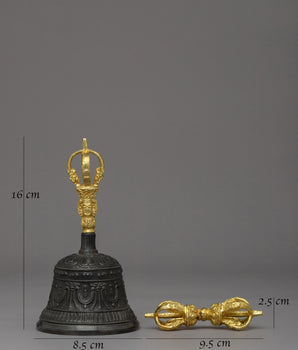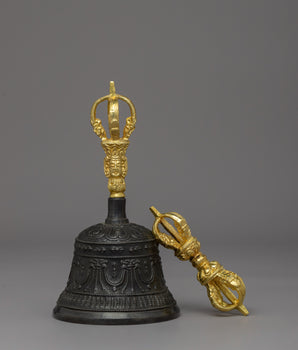Understanding the Materials Behind Authentic Craftsmanship
Authentic Tibetan jewelry is an active symbol of Tibetan culture, its spiritual aspects, and heritage traditions. The Himalayan plateau witnessed nomadic tribes of laypeople wearing these complex items as charms while treating them as sacred spiritual symbols for centuries. The jewelry exists through manual creation of techniques, which descendants have preserved since ancient times. “Norbu” refers to valuable decorations, higher spiritual elements, and worldly riches. Jewelry has remained an essential component in the traditional clothing of Tibetan people. The jewelry carries numerous cultural references to Buddhism. People believe that jewels help connect them to deities and protect them from threats in their lives, and divine connectors that also perfectly show the essence of Tibetan history.
The Tibetan jewelry includes Dzi beads, earrings, necklaces, bracelets, rings, and pendants are part of this category. The jewelry consists of coral, turquoise, and pearls. Tibetan carnelian with yak bones, gold, silver, copper, and more natural substances united through yak-hide string.
Origin and Influence

1. The Nomadic Origins
The Tibetan nomadic tribes first started creating jewelry for decorative use and protection against spiritual forces. The initial items were natural materials such as amber, turquoise, coral, and yak bone. Nomads used jewelry as decorative items, protection charms, and a divine connection, which shielded them from danger.
2. The Buddhist Influence
In the 7th century, when Buddhism arrived in Tibet, it transformed the cultural meaning and artistic style of Tibetan jewelry. Jewels during this period included Buddhist symbols like the Dorje (Vajra), the Eight Auspicious Symbols, which protected wearers through spiritual power. During religious practices, people commonly employed Ghau boxes for storing mantras and relics. Jewelry assumed its spiritual role as an integral part in maintaining connections between humans and their divine force.
A Glimpse into Craftsmanship
Tibetan jewelry is made through handcrafted techniques passed down from multiple centuries, selecting healing stones to create protective jewelry. The Jewelry design incorporates sacred symbols, including the Dorje, the Eight Auspicious Symbols, and mantras, which the artisans detail through carving and etching on metal and stone pieces. Small family workshops traditionally produce decorative jewelry as spiritual tools for meditation and religious practice, such as prayer boxes and beads for protection. Tibetan jewelry emerges from a blend of artistry that draws inspiration from Nepal and Bhutan, with cultural heritage and Buddhist philosophical principles.
Regional Variations

Traditional Tibetan jewelry elements stay faithful to Buddhist symbolism, yet different design traditions emerged from Nepal, Bhutan, parts of northern India, and among the Tibetan communities.
Nepal: Newari Craftsmanship
Famous for intricate filigree work alongside detailed repoussé techniques, Nepalese artisans mainly come from the Newar community. The blending of Tibetan spiritual motifs with fine craftsmanship in Nepal makes it a leading producer of Ghau boxes and mala beads.
India (Ladakh & Himachal): Bold Designs
The jewelry draws inspiration from Tibetan designs using heavy silver constructions and prominent coral and turquoise stones to create a rough tribal appearance. The jewelry craft shows the nomadic cultural heritage of high-altitude lands through its pieces, which protect and represent status.
Eastern Tibet (Amdo & Kham): Ethnic Identity
The Amdo and Kham regions choose large decorative accessories for the head and neck, which they prefer to wear at special events. Traditional nomadic communities use this jewelry to demonstrate their tribe membership and maintain their warrior-based strength and tribal pride.
Bhutan: Simplicity with Meaning
Bhutanese jewelry appears in subtle forms that blend naturally with clothing worn during daily activities and religious events. The purpose revolved around spiritual beliefs rather than decorative display, it upholds the Bhutanese ideals regarding modesty and balance.
Modern Fusion with Contemporary Style
Modern Tibetan jewelry in global communities matches the spiritual meanings of traditional symbols, such as mantras and lotus motifs, through minimalist designs made from alternative materials and contemporary design elements.
Symbolism and Meaning

Tibetan Ornaments with symbolic motifs carries spiritual and cultural importance. These designs demonstrated more than decorative usefulness; they reflect essential beliefs and teachings of this faith. Jewelry pieces commonly show famous symbols, blessings, and protective benefits as they maintain dual decorative value and devotional significance.
1. Stones
- Turquoise is considered one of the most sacred stones in Tibetan culture, which provides life energy, healing, protection, and vitality.
- Coral symbolizes life force and feminine energy. Beliefs enhance their strengths and protect them against negative energy.
- Amber is a cleaned-up resin version of fossilized trees, known as a healing substance. This stone is a solar energy storage vessel that defends against ill energy and unhealthy matters.
- Silver appears more frequently in protection designs and symbolizes purity. The item works as an energetic defensive shield.
- Gold emerges sparingly in Tibetan traditions, yet its presence signifies divine forces of enlightenment and solar power.
2. Symbols
The symbolic designs of Tibetan jewelry consist of elaborate patterns that embody different spiritual meanings.
- The Dorje (Vajra) represents spiritual power and indomitable strength in the form of a thunderbolt. Tibetan Buddhism uses this symbol to symbolize the compassionate masculine essence.
- The mantra “Om Mani Padme Hum” appears written on pendants, rings, and prayer beads as spiritual symbolism. The phrase contains affective power that attracts the blessings while offering wisdom and compassion.
- The Eight Auspicious Symbols (Ashtamangala):
Endless Knot – Infinite wisdom and eternal harmony.
Lotus Flower – Purity that emerges from the muddy water of suffering.
Conch Shell – The sound of Buddhist teaching.
Dharma Wheel – the Noble Eightfold Path of the Buddhadharma.
Victory Banner – Triumph over ignorance.
Parasol – Protection from all evil.
Treasure Vase – Nature of the dharma, and prosperity.
Golden Fishes – The ocean of earthly life and fertility
Ritual and Adornment Use
Tibetan jewelry functions beyond decoration; its ceremonial and ritualistic value remains substantial. People wear this jewelry at festivals, during spiritual events, and at important life stages, to function as spiritual equipment and protective amulets. Ghau prayer boxes contain sacred items such as mantras, with relics and substances that serve to bless and protect them. Mala beads focus on meditation since these beads assist with mantra recitation during chanting activities. Splendid jewelry sets are the choice for significant rituals and weddings, invoking prosperity and honoring spiritual traditions. The selection process of each item occurs with intention; beauty alone is not their purpose, although these objects actively establish spiritual connections to Buddhist teaching and family lineage history.
How to Identify Authentic Tibetan Jewelry?

The handcrafted Tibetan jewelry possesses religious symbolism, while mass-produced imitations continue to spread extensively throughout the market. Selection criteria for authentic jewelry include understanding these points:
- Authentic handmade Tibetan products from Tibet feature hand-carved designs and imperfections, distinguishing them from machine-made symmetrical items.
- The authentic traditional jewelry market consists of natural stones, including turquoise, coral, amber, yak bone, and set within silver or copper, but counterfeit items use plastic or dyed resin.
- Tibetan jewelry that deserves authenticity displays sacred symbols, including the Dorje, mantras (Om Mani Padme Hum), and the Eight Auspicious Symbols, with spiritual significance rather than ornamentation.
- Jewelry purchases should be limited to artisan collectives and fair trade shops so buyers receive information on production methods. Buy authentic Tibetan-style elements only when their origin story matches original details and proof of origin is established.
- Genuine jewelry has a steep price tag, so ensure the bill is reasonable according to market standards. The higher costs maintain their craftsmanship while investing in quality materials and creating safe workplaces.
Global Recognition of Tibetan Jewelry
The global appreciation of Tibetan jewelry is based on its symbolism as well as manual craftsmanship and unique aesthetic qualities. Buddhist motifs now meet contemporary aesthetics because of modern adaptations that have emerged. Due to the growth of online platforms together with fair-trade marketplaces these attractive pieces have found their way to expanded global popularity.
Traditional jewel crafting takes place throughout workshops located in Nepal, India, and Tibet to save Tibetan craftsmanship for generations to come. Fair-trade organizations, artisan cooperatives, now supply collectors with sustainable, ethical jewelry products that protect Tibetan traditional craftsmanship and provide just financial rewards for their artisans. The modern fashion market embraces traditional jewelry while it upholds its identities through cultural heritage, spiritual meaning, and artistic value.
Conclusion
Authentic Tibetan jewelry represents an outstanding fusion between the traditions of Buddhism, artistic achievements, and national heritage. Traditional Himalayan nomadic traditions, together with Buddhist spiritual influences, have shaped each piece to transform from a decorative purpose into spiritual instruments for protection and identity expression, and spiritual unity. The Himalayan people share both spiritual heritage and various artistic approaches through separate practices that exist from the detailed Newari repoussé techniques in Nepal to the defiant tribal designs of Ladakh and the ceremonial pieces of Amdo and Kham. The detailed artistic work exemplifies the powerful fusion of artistic expression and religious beliefs. Modern fashion landscapes embrace jewelry because it brings global popularity through its dual manifestations of both aesthetic glory and cultural purity of spirit.
Tibetan artisans receive their rightful skills and transfer from generation to generation when consumers support fair-trade collectives and artisan cooperatives. Tibetan jewelry embraces not only decorative elements but also the enduring spiritual traditions combined with Tibetan strength and cultural heritage. The act of wearing it represents both the celebration of ancient customs and the preservation of divine wisdom with traditional strength.








